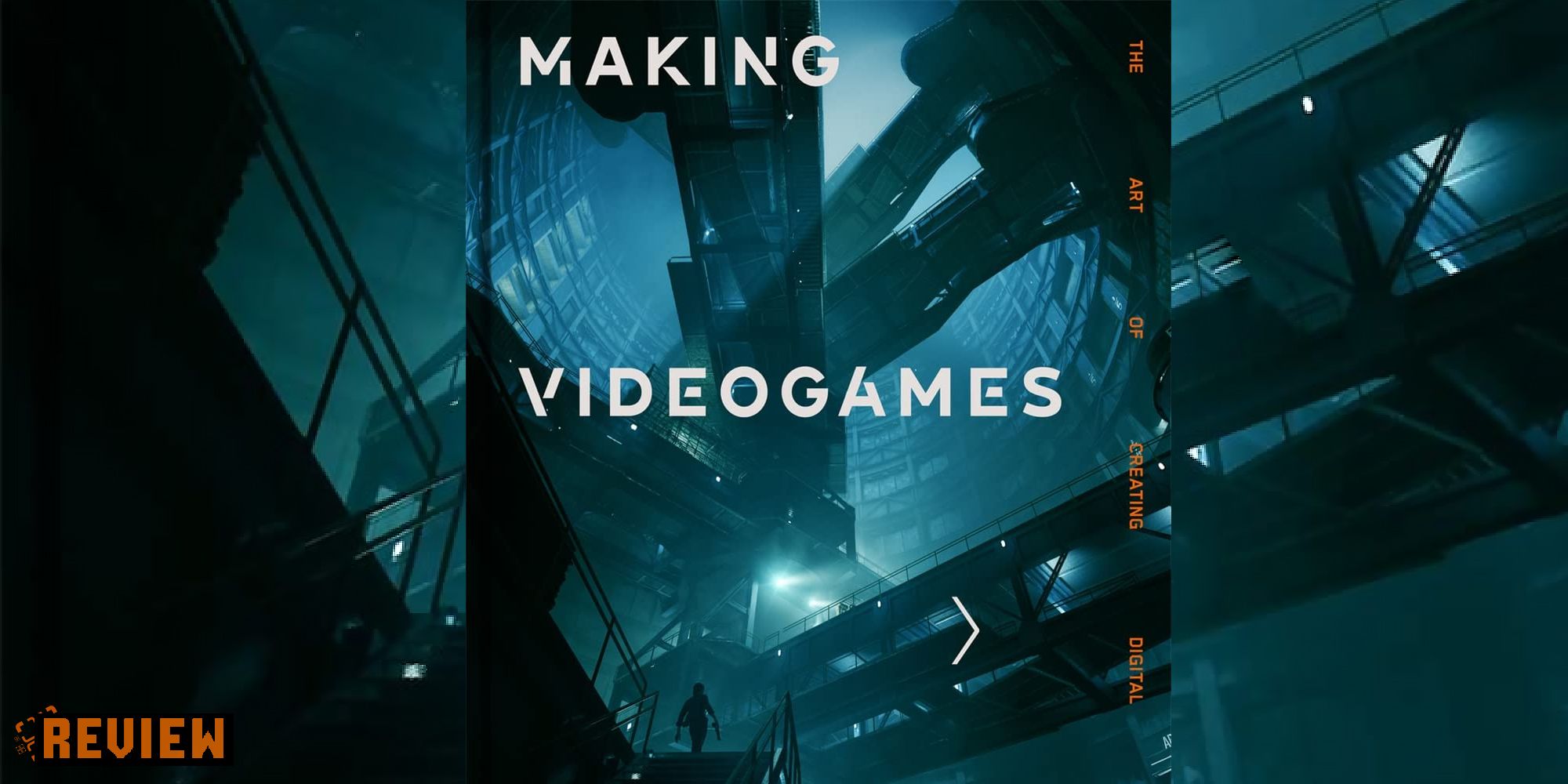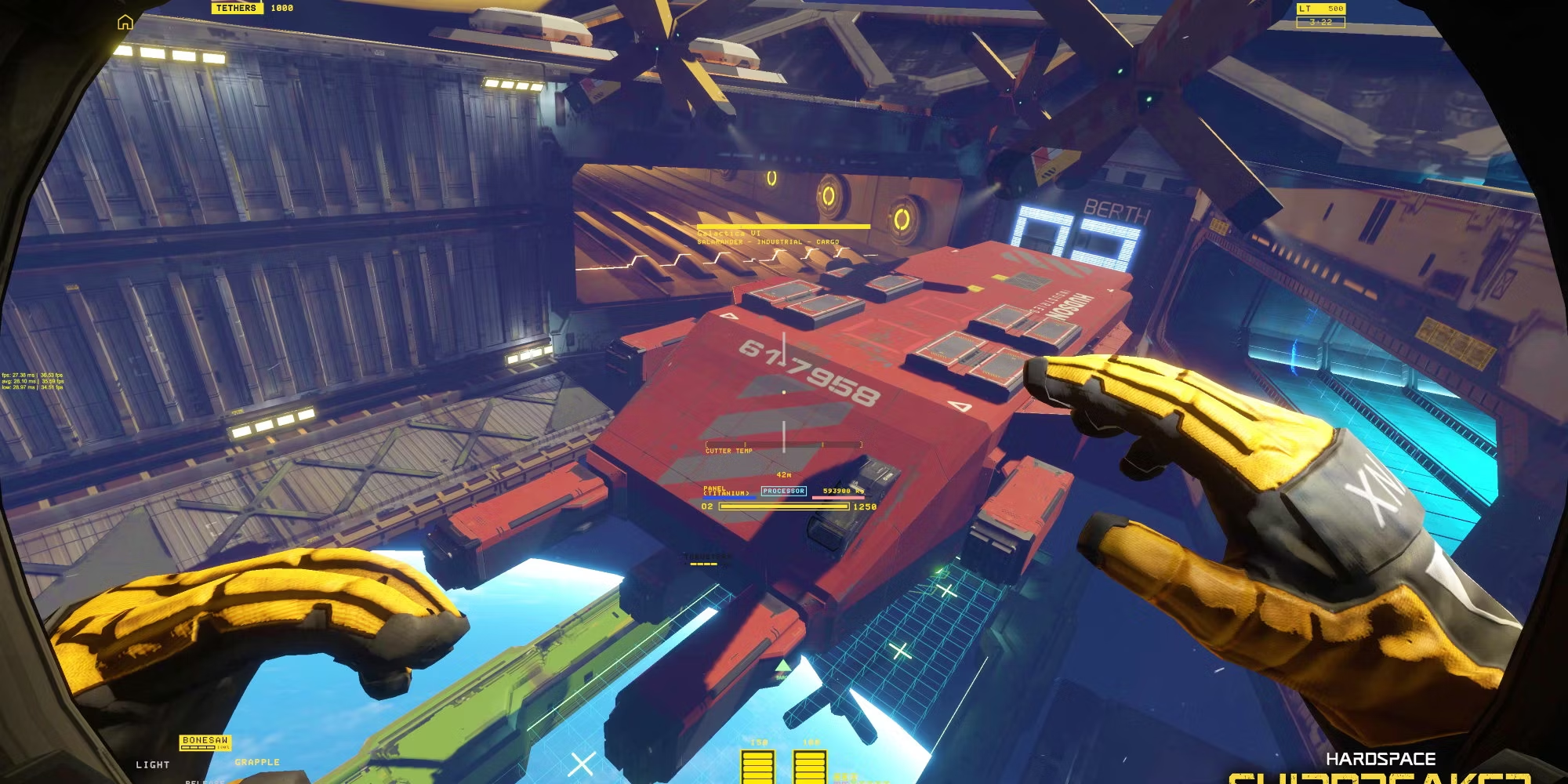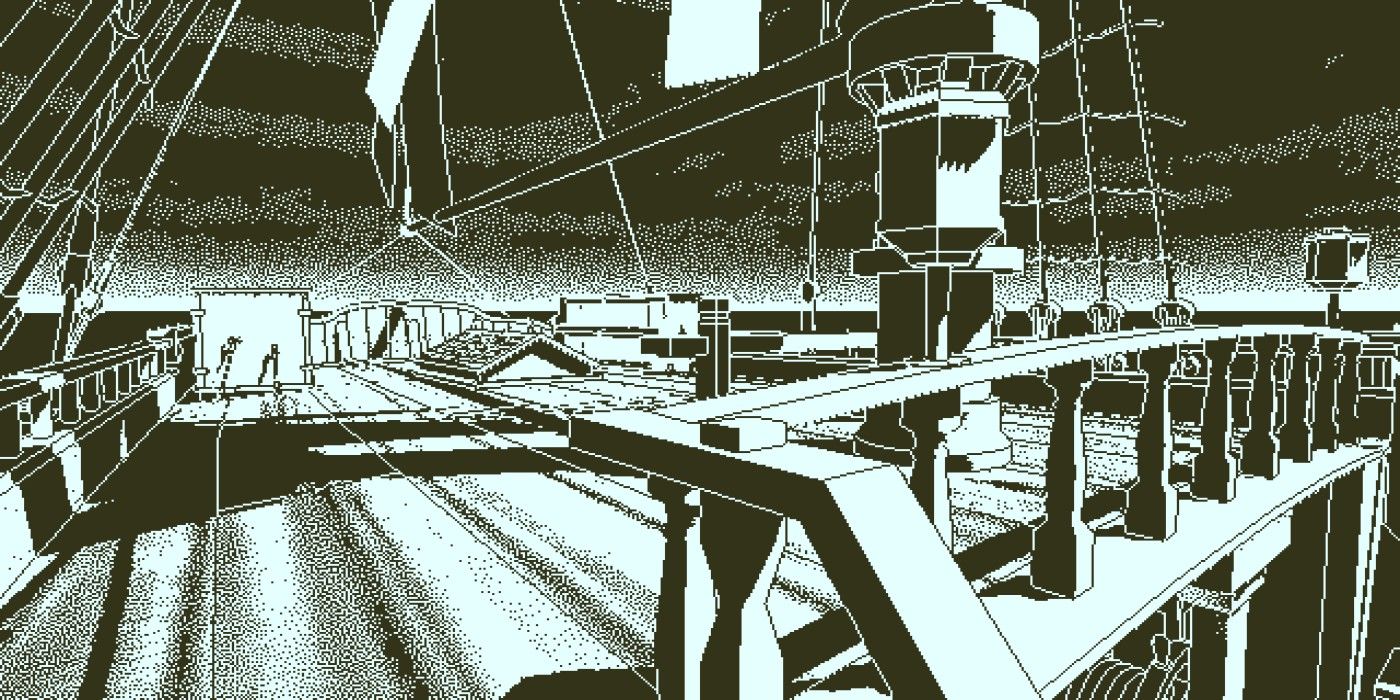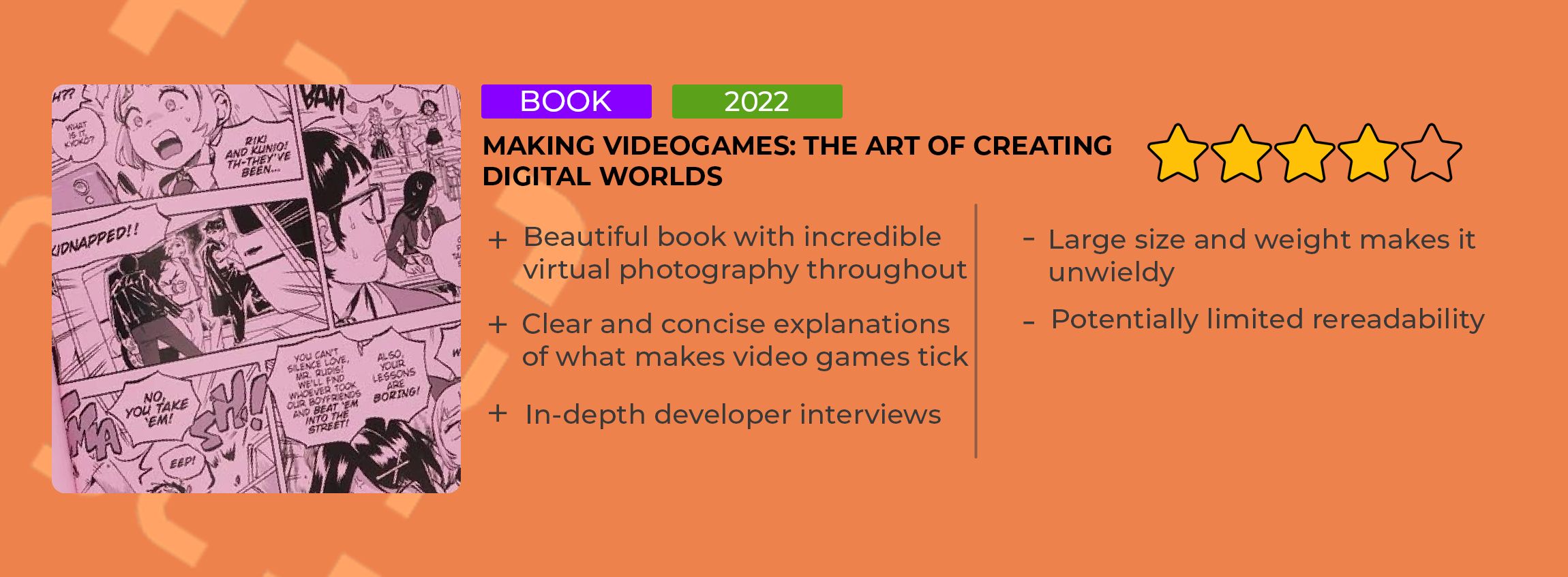In its opening pages, Making Videogames states that it's not by chance that Super Mario 64 "characterized its virtual camera as a videographer flying on a cloud." Games are made up of shots and angles, each item and backdrop painstakingly chosen to make the player feel like they're really a part of the scene, or at least to make the gameplay as effective as possible. Duncan Harris and Alex Wiltshire, the creators of Making Videogames, become Lakitu, floating around 12 games and snapping the best shots - picking the prettiest, the most emotive, and the most demanding to produce. Ripped from the context of gameplay, with no sound cues or interactivity to accompany them, Making Videogames recontextualises these stills as art, before analysing them through different lenses to understand what went into creating them and what makes them tick.
But this isn't just a photography book. Making Videogames scrutinises the designs of 12 games, from Disco Elysium's impressionist painterly style to Grid's realism. It tries to understand why artistic decisions were made from as much a gameplay standpoint as an aesthetic one, and the developers also offer their insight into why they made the artistic decisions they did, and how the results were achieved.
Hardspace: Shipbreaker, Control, Paper Beast, No Man’s Sky, A Plague Tale: Innocence, Disco Elysium, Return of the Obra Dinn, Grid, River City Girls, Thumper, Half-Life: Alyx, and SOMA are all discussed in concise yet informative chapters, each one contributing a different perspective on how video games are made, from solo devs to massive studios, from hyperrealism to pixel art. I won’t list exactly what each chapter covers, but it’s safe to say that the authors found the perfect angle for each included game. Some might say it’s easy to pick up on the hyperrealism of Grid or the VR-ifying of environments for Alyx, but each game has been chosen for a reason, and the insights into each will be surprising. When there are quite literally millions of games out there, picking the perfect 12 is no mean feat.
This 250-page tome is as much an insight into development as it is a coffee table book with pretty pictures – and it is a coffee table book with pretty pictures, with each featured game focusing on a different aspect of visual design. Control is about the lighting, No Man's Sky about the mathematics of procedurally generated environments, and Return of the Obra Dinn on the struggles of developing solo. For a book that is dripping in style, there's a hell of a lot of substance too. Making Videogames is less about the making of worlds than it is the creation of the textures, the direction of the lighting, and the implementation of clever techniques. It doesn’t really touch on how to make a virtual world feel alive, but explains in great detail how to actually create a video game world full stop.
Perhaps I should have been warned of this by the title, but this is very much a book about making games. I wrongly expected it to celebrate them, especially those with stunning vistas and painstakingly designed details, and go no further. I expected pages of Red Dead Redemption panoramas and God of War creature designs. I thought it would be a picture book. But it’s so much more. While it does have pictures, and those pictures are vital to its premise, they aren’t the focus. I found myself turning page after page to read the developers’ insights, only leafing back through the chapter afterwards to take in the accompanying images. The images themselves take on new meanings after learning how the developers have scraped a rust texture across the surfaces of a giant spaceship or how the artists went to town with their abstract ideas when it got to the coastline.
It's my job to know things about games, and this book showed me how little I understand about development. It was like being on my first day at Gamer School, and I was the know-it-all sitting at the front of class with his hand in the air, practically scraping the ceiling, wanting to lap up every detail. In another life, Making Videogames could have been a regular A5 treatise on developing game environments – that’s if the Harris skipped the epic spreads of supermassive space stations, slick race tracks, and 1-bit pirate ships. It would be worse for it, but it would work all the same, such is the depth and precision of the writing. Everything is informative and concise, but never confusing, which is impressive considering the technicalities that are being explained and explored.
It’s an interesting decision to separate developer quotes from the Wiltshire’s narration, one that I suspect is borne out of this being intended to be a centrepiece on the coffee table rather than a standard interview-led non-fiction book to read cover to cover. Flick to practically any page and you can choose what to dip into. Of course, the pictures grab you first, and then the large lettering of the developer quotes give you context, explain how this effect was achieved, and why it was important or difficult to do. Interest piqued? Read the smaller print for authorial insight, no doubt gained from hours of interviews, to break down the nitty gritty of what went on behind the scenes of this shot, and why. I enjoyed taking everything in, poring over every word, but I’ll be unlikely to do that when I reread it, and neither will people picking it up for a quick glance. The separation of interview quotes from the author's voice is clever, and I feel I’ll come to respect that more as I dip back in.
And this is a book to dip in and out of. I might have been embarrassed if I invited a guest to my house and left a gaming book out on the table. "Oh sorry, that's the fifteenth Halo novel; it’s for research," I’d hastily explain. Or: "Apologies, I was just reading up on the Darkspear Rebellion for an article" – the excuses would come thick and fast. But not this one. I would not only have this volume proudly on display, I'd encourage guests to flick through, have a read, and hopefully enjoy it whether they like games or not. At the very least, they’d come out having seen some incredibly pretty pictures. I'd recommend you do the same.
A review copy of the book was provided by the publisher.




